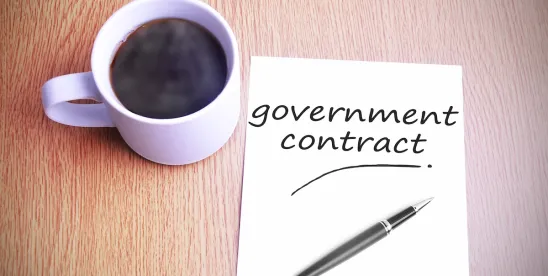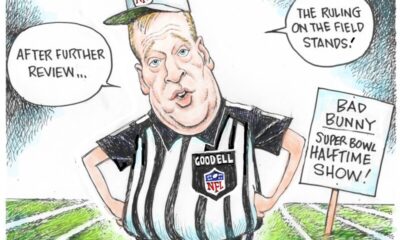Business
Protecting Contractor Performance Ratings During Government Shutdowns

Government shutdowns pose significant challenges for federal contractors, particularly when it comes to fulfilling performance obligations while agency operations are halted. The potential for receiving negative evaluations from the Contractor Performance Assessment Reporting System (CPARS) increases during these periods. According to the Federal Acquisition Regulation (FAR) 42.1503 (b)(2), agencies assess contractor performance based on several factors, including technical performance, cost control, schedule adherence, and management relations. A shutdown can severely impact these metrics, and without adequate documentation, contractors risk long-term damage to their performance ratings.
Strategies for Protecting CPARS Ratings
To mitigate risks associated with negative CPARS ratings during a government shutdown, contractors can follow a series of practical strategies:
**Document Thoroughly**
Comprehensive documentation is crucial for defending against future disputes related to CPARS evaluations. Contractors should maintain daily logs that detail personnel activities, performance impacts, and all correspondence with government representatives. Specific instances of work delays, suspensions, or alterations due to government inaction should be recorded meticulously. Keeping copies of all communications regarding stop-work orders, funding limitations, or access restrictions creates a narrative that can aid in countering any claims attributing performance issues to contractor fault.
**Ensure Clear Communication**
Even in the absence of government personnel during a shutdown, contractors must keep a written record of all outreach efforts. This includes sending formal notifications to agencies regarding anticipated performance impacts and requesting clarification from contracting officers about work continuation or suspension. Following up once government operations resume helps confirm understanding of any missed correspondence. Transparent communication illustrates diligence and can counter any claims that the contractor failed to manage performance effectively.
Utilizing Contractual Protections
Contractors are advised to review relevant contractual clauses that protect their rights during funding lapses. Key provisions include FAR 52.242-15, which addresses stop-work orders, and FAR 52.242-17, which pertains to government delays of work. Invoking these clauses can formally document the nature of delays as government-directed, potentially shielding contractors from negative performance assessments.
**Internal Coordination is Key**
Shutdowns often create confusion among project management, legal, and accounting teams within contracting organizations. Coordinating internally ensures consistent messaging to government officials and accurate tracking of costs associated with shutdown impacts. This also aids in preserving claims for equitable adjustments or schedule relief, which can support later rebuttals to CPARS evaluations.
**Responding to Negative CPARS Evaluations**
In the event that a CPARS evaluation reflects issues tied to a shutdown, contractors should act swiftly during the 14-day review period. A well-documented rebuttal should include references to contractual authority and evidence of delays caused by the government. Contractors should also escalate their concerns through the agency’s CPARS focal point or consider initiating a claim under the Contract Disputes Act if necessary.
**Resetting Expectations Post-Shutdown**
Once government operations resume, it is essential for contractors to meet with contracting officers to reaffirm performance timelines and deliverables. Clarifying how shutdown-related delays will be reflected in contract modifications and reestablishing performance baselines can prevent misunderstandings moving forward.
The impact of a government shutdown may be beyond a contractor’s control, but a poor CPARS rating does not have to be. By implementing thorough documentation practices, maintaining proactive communication, and effectively utilizing contractual mechanisms, contractors can demonstrate their compliance and safeguard their performance records even amidst government inaction.
-

 Science2 weeks ago
Science2 weeks agoResearchers Challenge 200-Year-Old Physics Principle with Atomic Engines
-

 Politics2 weeks ago
Politics2 weeks agoNHP Foundation Secures Land for 158 Affordable Apartments in Denver
-

 World6 days ago
World6 days agoBoeing’s Aircraft Production: Assessing Numbers and Challenges
-

 Entertainment5 days ago
Entertainment5 days agoSyracuse Stage Delivers Lively Adaptation of ‘The 39 Steps’
-

 Health2 weeks ago
Health2 weeks agoNeuroscientist Advocates for Flag Football Until Age 14
-

 Lifestyle2 weeks ago
Lifestyle2 weeks agoLongtime Friends Face Heartbreak After Loss and Isolation
-

 Lifestyle4 days ago
Lifestyle4 days agoTrump’s Push to Censor National Parks Faces Growing Backlash
-

 Politics4 days ago
Politics4 days agoNFL Confirms Star-Studded Halftime Show for Super Bowl LVIII
-

 World2 weeks ago
World2 weeks agoGlobal Military Spending: Air Forces Ranked by Budget and Capability
-

 Lifestyle5 days ago
Lifestyle5 days agoRed Bluff High School’s Elli Nolan Named Rotary Student of the Month
-

 Science5 days ago
Science5 days agoAI Misidentifies Doritos Bag as Gun, Triggers Police Response
-

 Business2 weeks ago
Business2 weeks agoSpirit Airlines Cuts Workforce with Furloughs for 365 Pilots









